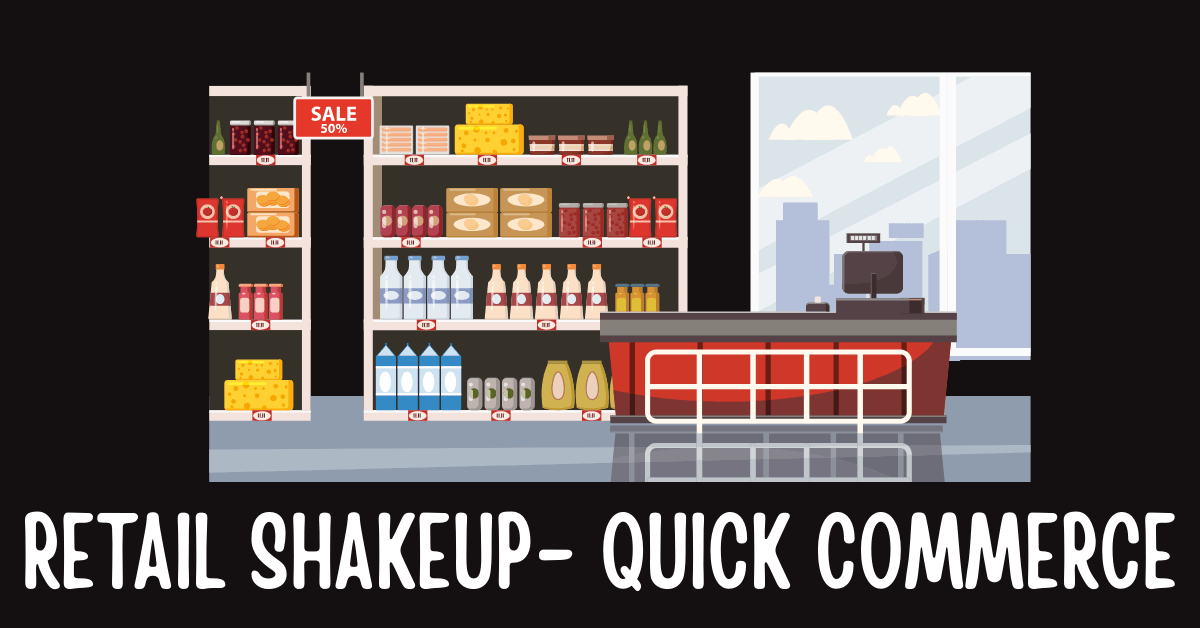Quick Commerce India: The Retail Shakeup Shocking the Industry!
India’s retail landscape is undergoing a major transformation. Quick commerce India is emerging as a powerful force, offering a $9.95 billion opportunity by 2029. While traditional e-commerce grows at 14% annually, quick commerce is booming at a 73% CAGR. This model uses over 2,000 dark stores and AI-powered logistics to deliver orders in 8–11 minutes. However, challenges remain in unit economics and sustainability. The sector now commands a 7% penetration of a $45B addressable market, with Blinkit (45% share) and Zepto (valued at $3.6B) leading the change and reducing reliance on kirana stores by 46%. India’s $1.2 trillion retail market is split into two parts: This disruption mirrors China’s 2015 New Retail revolution but features uniquely Indian characteristics, including hybrid models that integrate kiranas, hyperlocal dark stores, and fintech-enabled payments. Market Landscape & Trends Metric Quick Commerce Traditional E-commerce Modern Retail Annual Sales (2024) $3.34B $64B $780B CAGR (2024-2029) 24.5% 18.7% 9.2% Order Frequency 6/month 2.1/month 18/mont Delivery Time 8-11 mins 2-3 days Immediate Sales, Growth, and Order Metrics Annual Sales (2024) CAGR (2024-2029) Order Frequency Delivery Time Growth Drivers Quick Commerce India Deep Dive into Quick Commerce Operational Model Dark Store Economics Tech Stack Market Leaders Analysis Company Delivery Time Market Share Key Strength Valuation Blinkit 11 mins 45% Zomato’s ecosystem synergy $13.4B (Zomato) Zepto 9 mins 21% Dark store automation $3.6B Swiggy Instamart 8 mins 27% Instamart Cloud kitchens $12.7B (Swiggy) Comparative Analysis Aspect Quick Commerce E-commerce Modern Retail Inventory Turns 48x/year 8x/year 24x/year Last-Mile Cost $1.8/order $0.9/order $0 (customer pickup) Customer LTV $240/year $180/year $1,200/year Margins 5–7% 10–12% 15–20% Quick commerce achieves 3.2 times higher basket replenishment frequency than e-commerce but has a 43% lower average order value ($14 vs. $24). Impact on Traditional Retail Negative Impacts on Kiranas Adaptive Responses from Traditional Retail Tech Integration Operational Upgrades Ecosystem Partnerships Strategic Implications Quick commerce is pushing traditional kiranas to adapt. Some become tech-enabled innovators, while others face significant challenges. Consumer Behaviors: Quick Commerce vs. Traditional E-commerce Key Behavioral Differences Aspect Quick Commerce Traditional E-commerce Order Frequency 6-8 purchases/month 1-2 purchases/month Basket Size $8-$15 average order Value $24-$32 average order value Delivery Expectation 83% expect ≤30-minute delivery 67% accept 2-3 day delivery Purchase Planning 62% impulse buys for immediate needs 89% planned purchases Product Focus 78% buy perishables/groceries 54% purchase electronics/apparel Order Frequency Basket Size Delivery Expectations Purchase Planning Product Focus Drivers and Psychological Impacts Immediacy Over Loyalty: Urbanization Dynamics: Tech Influence: Psychological Impacts Quick Commerce: Traditional E-commerce: Emerging Paradoxes Regional Variations City Type Q-Commerce Penetration Traditional E-commerce Penetration Metro 41% households 68% households Tier 2 23% 51% Rural 7% 29% This behavioral bifurcation creates parallel markets – quick commerce dominates new economy needs, while traditional platforms retain authority for considered purchases. The divide is narrowing as 32% of traditional players now offer <4-hour delivery options. Environmental Impacts of Quick Commerce Carbon Footprint Packaging Waste Urban Infrastructure Strain Sustainability Initiatives Partial Sustainability Initiatives Company Green Measures Impact Limitations Zepto AI-optimized routes, 30% EV fleet 17% emission reduction in pilot cities Only 12% fleet electrified Swiggy “Plastic-neutral” pledges 22% packaging reduction since 2023 Failed to meet 2024 targets Blinkit Solar-powered dark stores 8% energy savings per facility Limited to 15% of warehouses Future Outlook In My Recent Discussion with Industry Leader from India Mr. Mayank Singh, here is the future of Retails Looks Like in 2025 and beyond: Quick commerce is not replacing Indian retail—it is creating a $45B hybrid ecosystem. Kiranas are evolving into tech-enabled dark stores, and consumers now expect fast, “now” delivery as the standard. Balancing speed, innovation, and sustainability will be crucial as the retail landscape continues to evolve in India. Quick Commerce Growth in India 2025-Emerging Cities, Sustainability, and Profitability

